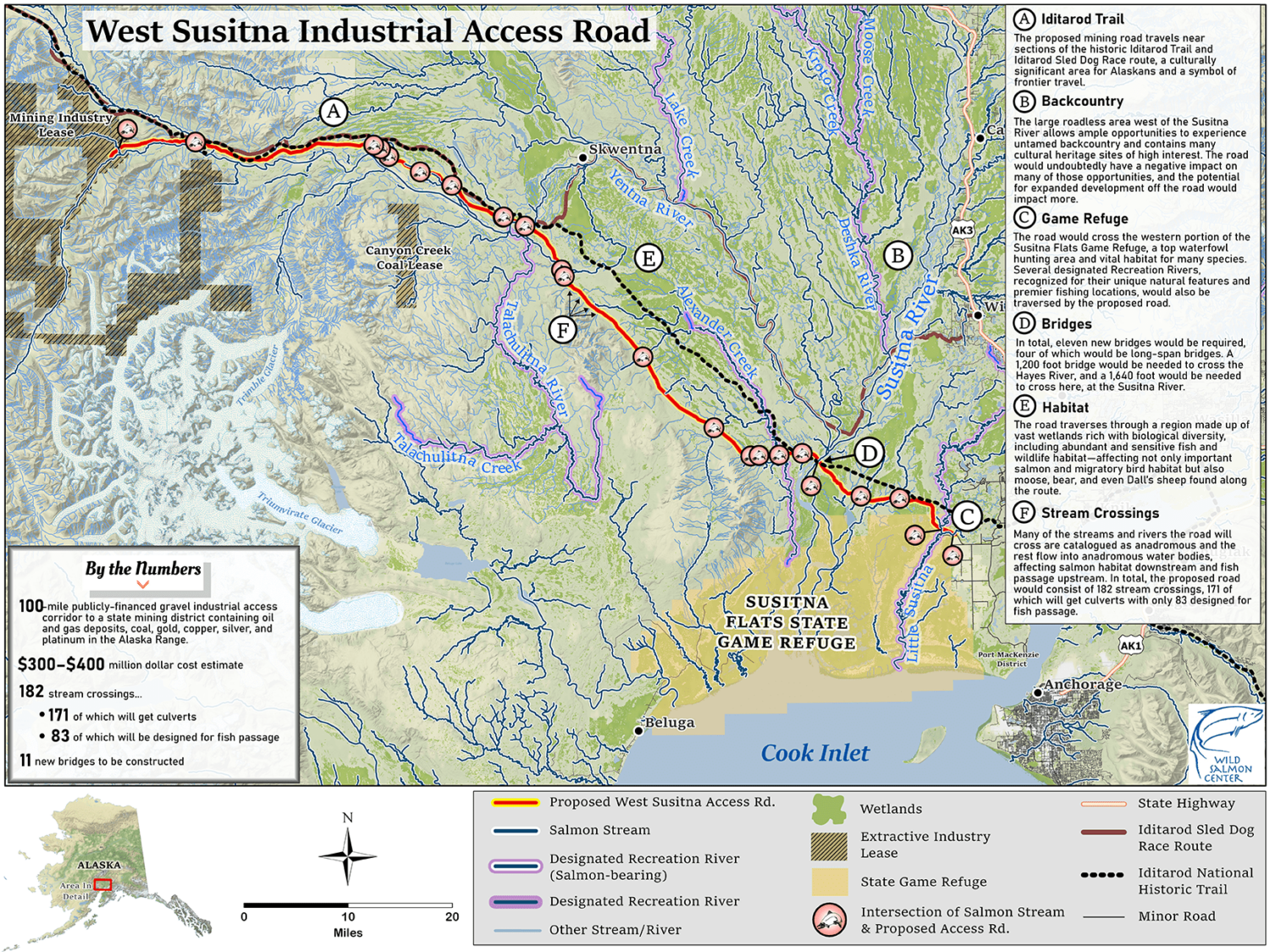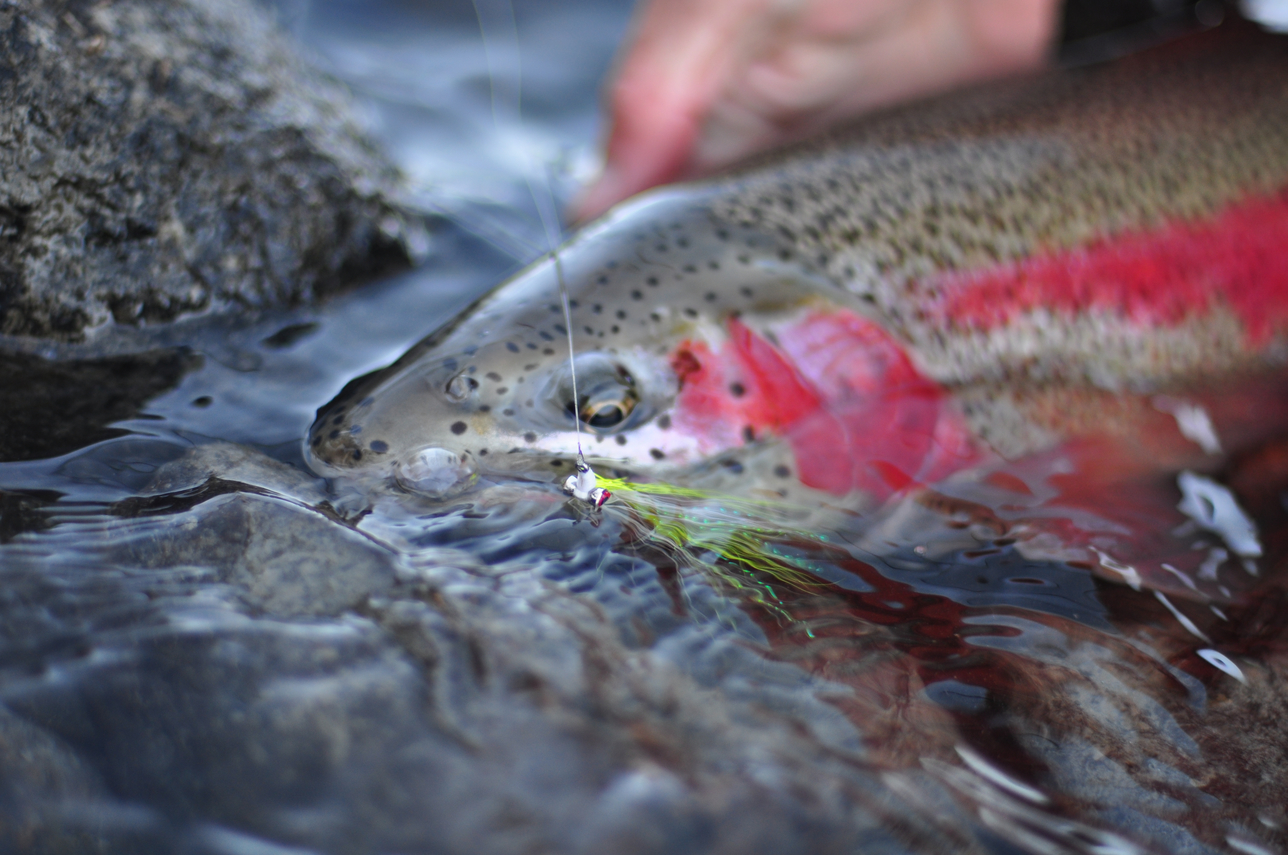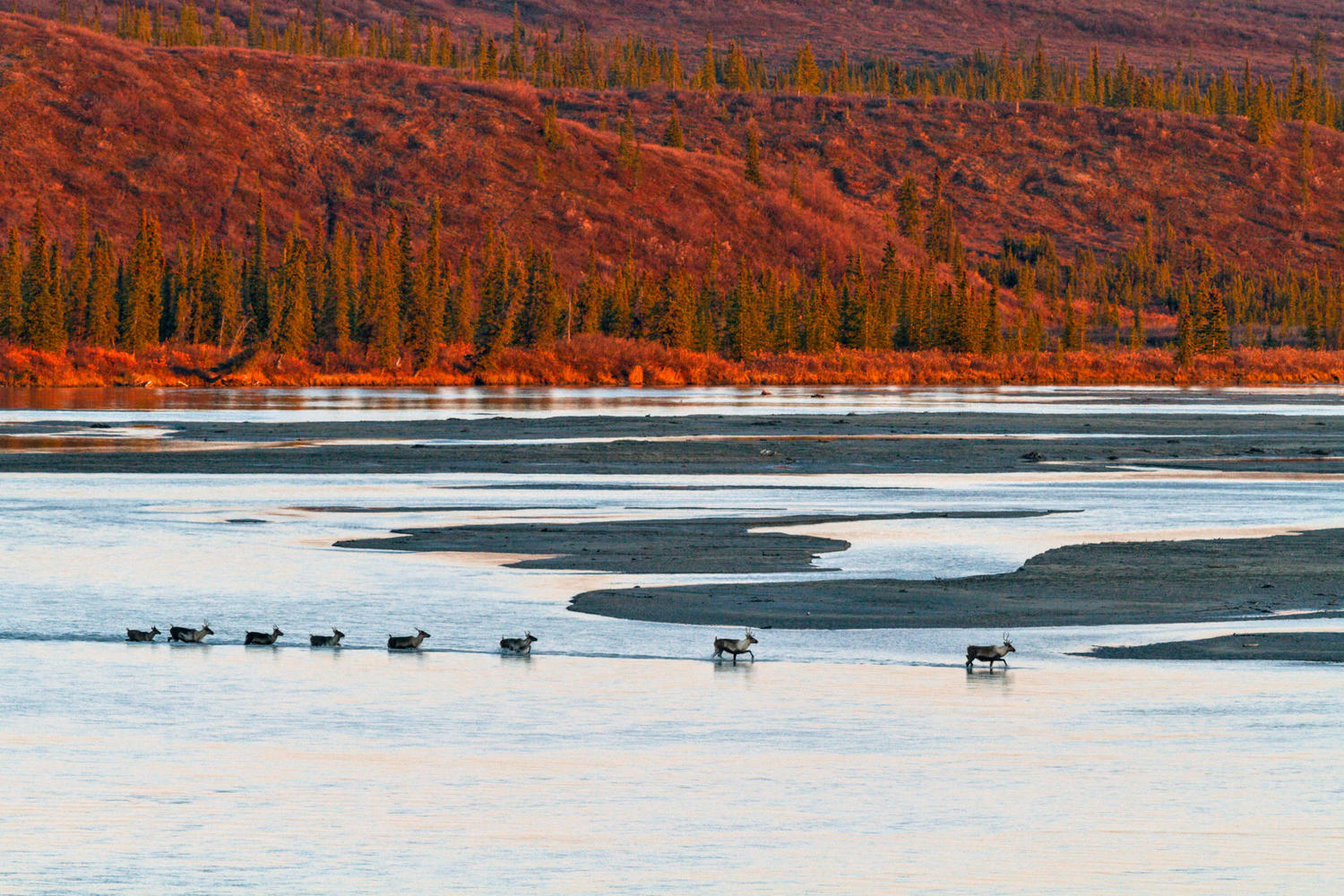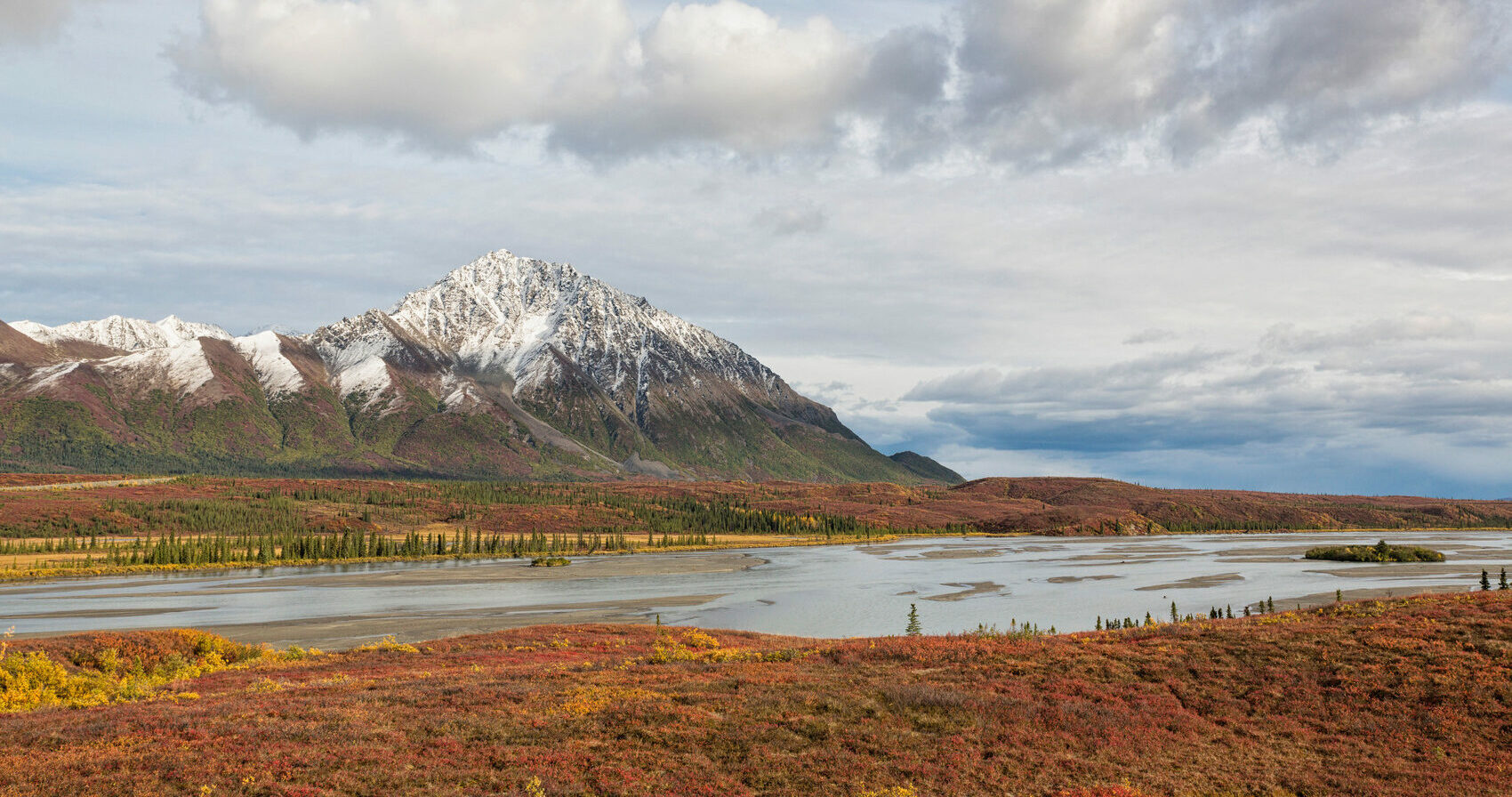The West Susitna Industrial Access Road would threaten at least 80 salmon streams in the Susitna River drainage – one of Alaska’s top Chinook producing watersheds.
A new state-sponsored, 100-mile-long Alaskan industrial road is slated to slice through a salmon-rich wilderness area the size of West Virginia in the Susitna River watershed. The project aims to connect an existing road system with an undeveloped mining district northwest of the greater Anchorage area, where a handful of Australian and Canadian companies hold claims.
Now Wild Salmon Center and other Alaskan partners are growing the Defend the West Su coalition to stop the road, which would cross more than 180 currently free-flowing streams—at least 80 of which are known to be salmon-bearing—along with a state game refuge, backcountry hunting areas, fly-fishing streams, and the Iditarod Trail.
“Why risk Alaskans’ hunting, fishing, and recreational opportunities—along with this region’s established tourism economy—so a couple mining companies can have a free road at their expense?”
Emily Anderson, Wild Salmon Center Alaska Program Director
“This road jeopardizes so much of what Alaskans treasure about the West Su,” says Emily Anderson, WSC’s Alaska Program Director.
“It just doesn’t make sense,” she says. “Why risk Alaskans’ hunting, fishing, and recreational opportunities—along with this region’s established tourism economy—so a couple mining companies can have a free road at their expense?”

And as an industrial road, Anderson notes, this project comes with additional risks.
“The standards for building these roads are much lower than for public highways,” she says. “That means to cut costs, developers often opt for the cheapest way to address stream crossings and fish passage—often harming salmon runs and cutting off habitat.”
That’s bad news for the Susitna, which supports Alaska’s fourth-largest Chinook run, as well as coho, sockeye, chum, and pink salmon, rainbow trout, Dolly Varden, and Arctic grayling.
The $350 million pricetag for the road is also raising eyebrows across Alaska because the project’s sponsor, the Alaska Industrial Development and Export Authority (AIDEA), has a history of expensive, failed ventures.
There was the $10 billion plan to build a hydroelectric dam on the Susitna River, despite a surplus of energy in the system. The $300+ million Healy Coal Project, idle since its completion in 1999. The $17 billion railroad to Alberta. (Click here for a full report on AIDEA’s megaproject performance from our partners at SalmonState.)
“AIDEA has already wasted billions of state funds just getting the paperwork filed for bad projects,” says Emily Anderson, Wild Salmon Center’s Anchorage-based Alaska Program Director. “So when we learned that they wanted to build a road to benefit a few foreign mining companies, that just raised huge red flags.”
In the next two years, AIDEA plans to spend $8 million seeking permits for the road.

Soon, Anderson says, Alaskans, businesses, Tribes, and the general public will finally have a chance to weigh in on this project.
In the coming weeks, the U.S. Army Corps of Engineers will determine whether AIDEA’s initial Clean Water Act permit application is complete, triggering the environmental review process and upcoming opportunities for the public to voice concerns.
“Word about this project is getting out among the small businesses, lodges, anglers, hunters, and Tribes who care about the area—and they’re rallying to stop it,” Anderson says. “Everyone agrees that the West Su region is too important to be sacrificed for speculative mining ventures.”
Learn more here about the campaign to Defend the West Susitna, and how you can help take action.

